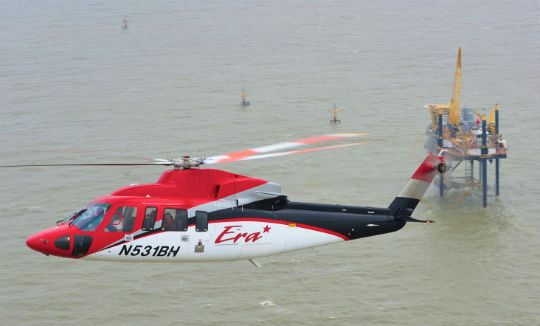
Developed with extensive industry input, BARS was created to serve as a single, consistent safety standard for the offshore helicopter industry. Mike Reyno Photo
The price of oil won’t be far from anyone’s mind at this year’s HAI Heli-Expo 2016, March 1-3 in Louisville, Ky. But while helicopter operators and manufacturers have been keenly focused on the economic impacts of rock-bottom oil prices, current market conditions also pose a challenge for safety in the offshore oil-and-gas sector.
Beyond the obvious financial pressures on operators, any dramatic change in operational tempo carries inherent risks. As Greg Marshall, vice president of global programs for the Flight Safety Foundation (FSF) pointed out, “Organizations that aren’t aware of that can set themselves up for an incident, or in the very worst case, an accident.”
FSF can help. Since last year’s Heli-Expo, the foundation has introduced a dedicated Basic Aviation Risk Standard (BARS) for Offshore Helicopter Operations, an extension of the highly successful BARS program it launched in 2010. Developed with extensive industry input, the standard was created to serve as a single, consistent safety standard for the offshore helicopter industry. The standard provides a basis for audits of offshore operators through the BARS program, but the associated documents are also available free of charge for any operator looking to study and implement best practices.
According to Marshall, the original BARS was the first industry-based standard developed to support the management of aviation risk for onshore resource sector companies. Developed by FSF in conjunction with aviation experts from within the resource sector, the standard is used to assess aircraft operators using an objective audit process and independent quality control. It is reviewed every six months, with updates incorporated regularly. Meanwhile, an accompanying implementation guidelines document serves as a ready-reference tool to assist aircraft operators, audit companies, and end-users of aviation services with the application of the standard.
Marshall explained that the extension of the concept to offshore operations was a natural evolution, as many existing BARS clients also have offshore interests, and “there was no one industry standard for offshore operations.” FSF tapped expert personnel from within the offshore resources sector to develop a draft standard, and then solicited feedback on the standard from industry. It released a final version of the standard in May 2015.
As with the original standard, FSF developed a companion implementation guidelines document to assist with implementation of the offshore standard. This includes references to other credible and useful industry resources, such as the “Health and Usage Monitoring Systems Best Practice Guidance” recently produced by HeliOffshore. The standard and implementation guidelines can be downloaded from the FSF website at flightsafety.org/bars/bar-standard.
Although aircraft operators do not have to be a part of the BARS process to take advantage of these documents, the pool-auditing concept offered through the program is proving to be another valuable resource in tough economic times. In these pool audits, highly experienced auditors from BARS-accredited audit companies conduct audits of aircraft operators using a consistent, objective methodology. Their audit reports are then uploaded to a database, where they undergo a rigorous independent quality control process at FSF’s office in Melbourne, Australia. These audit reports then become available to subscriber member organizations that are the end-users of aviation support services.
According to Marshall, pool audits are efficient and cost-effective for operators and their customers alike — and help keep operators’ focus where it belongs. Repetitive, redundant audits by individual end-users can be an enormous drain on operators’ resources, and in a down market, resources are always limited. As Marshall put it, “Your people who are there to manage safety are there to manage safety, not hang off the coattails of auditors.”









